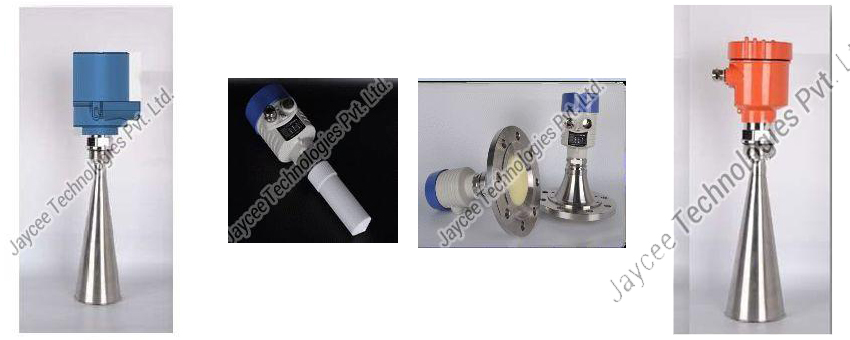-
jayceetech@gmail.com -
+91-9371068669 - Send SMS
- Send Email
The Uses And Benefits Of Radar Level Transmitters And Their Types
Posted by Admin on April, 18, 2022

Radar technology is primarily used in the detection of levels in liquids. The benefit of using Radar Level Transmitter is that they help in measuring the levels of certain liquids that cannot be contacted. The liquids may be stored in tanks and they may be corrosive in nature. It is under these circumstances that such instruments are required while measuring their levels.
What Waves Do Radar Level Transmitters Use?
Radar Level Transmitters use electromagnetic waves in their transmission. These waves are in the microwave X-band range that measures to about 10GHz. This is the reason why they are also called microwave level measurement devices.
The Components Of A Radar Level Transmitter
A Radar Level Transmitter is an instrument that comprises various parts like:
• A transmitter that comes with an in-built solid-state oscillator
• A radar antenna
• A receiver that has a signal processor with an operator interface
The Varying Radar Level Measurement Systems
A radar level measurement technology has two different types of measurement systems. These systems are:
• Noninvasive or Non-contact Systems
• Invasive or Contact Systems
Noninvasive Or Non-Contact Systems
This type of system again is subdivided into two different types – one is the frequency-modulated continuous wave technology or FMCW and the other is the Pulsed Radar Technology.
Frequency Modulated Continuous Wave Technology
In this system, there is an electronic module situated on top of the tank with a sensor oscillator that sends down a linear frequency sweep. This frequency sweep has a fixed bandwidth and sweeps time. The radar signal that is reflected from the surface is in proportion to the distance between the two.
This frequency is different from the frequency of the signal that is transmitted but the two signals mix well together to form a newer frequency that is again proportional to the distance. It helps in measuring the level of the fluid much more accurately.
The benefit of using this system is that the signals that are transmitted are frequency modulated in place of the amplitude modulated signals. Most of the noise in the tank is in the AM range and hence does not affect the FM signals. Thus this system is the most accurate and precise way of measuring fluids in a tank.
Pulsed Radar Technology
This system is also known as pulsed time-of-flight systems. It works much in a similar way as the ultrasonic level transmitters. The Pulsed Wave system emits microwave. The level is measured from the time of flight of the signal. Since its range of power is much lower than the FMCW system, the disturbances present in the tank affect the accurate measurement system.
Invasive Or Contact Systems
This technology uses the Guided-wave radar method. In this system, a rod or cable guides the microwave from the sensor to the surface of the material present in the tank. This wave goes right to the bottom then. The time that is consumed by the wave to go right down to the bottom of the tank, and reflect the wave back up, helps in measuring the fluid in the tank.
The Design Of The Antenna In The Radar
The radar used for the antennas in the noninvasive measurement system is found in the market having the two following designs. They are:
• Parabolic dish antenna
• Cone antenna
Factors To Consider Before Selecting The Radar Type
The parabolic dish antenna is designed to transmit signals over a wide area while the cone antenna covers a very narrow area. But while choosing your antenna, you must take into consideration the requirements that you have in hand. You must also consider other factors like the obstruction in the tank, the presence of vapor or foam in the tank, the turbulence on the surface and the physical properties of the liquid in question in the tank.
Another contributing factor is the size of the radar that is being used. If the size of your radar is small, then the readings taken will be affected. The smaller diameter of the antenna will have a higher divergence rate of the beam. Unwanted wave reflections from the tank act as barriers to taking the precise reading. But the plus point, in this case, is that wave will surely go back to the sensor. The chances of it getting deflected are small.
Bigger diameters on the antenna have a more pinpointed and stronger signal system that will cause less beam divergence and give more accurate readings. They do away with noise that comes from the horizontal and flat surfaces. But if
you look at the downside, bigger areas mean larger reflections from the various sources that might act as a hindrance.
Conclusion
Do you know from where you can get the Radar Level Transmitter? It is very easily available with renowned Radar Level Transmitter Suppliers all over the country, especially in Pune. You can knock on their doors for a quotation or any details if you have any plans of buying the systems.
Search
Category
Recent Posts
- The Importance of Level Sensor
- Flow Meters Suppliers: Confirming Precision in Every Fall
- Learning About Sensors That Use Rotating Paddles For Electronic Measurement
- Maximizing Efficiency with RF Admittance Level Switches: Benefits Unveiled
- Get a quality hydrostatic level transmitter from the suppliers
Leave a Comment